FROM COLD TO GOLD: EFFECTIVE EMAILING TECHNIQUES THAT GROW YOUR SOLO BUSINESS
Cold emailing is an essential tool for solopreneurs looking to grow their business and attract new clients. Yet, crafting messages that stand out in a crowded inbox and elicit replies isn’t easy. It demands a careful mix of conciseness, character, and smart strategy. In this guide, we dive into practical steps and examples designed to make your cold emails more compelling and successful. By following these insights, you’ll be better equipped to connect with your prospects and achieve the responses you’re aiming for.

Research Your Prospects
Before drafting your cold email, take time to understand who your prospects are. This involves more than just knowing their names or job titles; it’s about understanding their needs, challenges, and business goals. Start by crafting an Ideal Customer Profile (ICP) that represents your perfect client. Use this profile to guide your research, focusing on identifying the pain points and interests of your prospects. Platforms like LinkedIn and Hunter.io are invaluable for not only finding potential leads but also ensuring their contact information is up to date. This preparatory step ensures your message is relevant and targeted, significantly increasing the likelihood of a positive response.
How-To:
- Create an Ideal Customer Profile (ICP) including demographics, needs, and pain points.
- Use LinkedIn to research individual prospects and their business challenges.
- Verify email addresses with tools like Hunter.io to ensure accuracy and reduce hard bounces.
Example:
Suppose your target market includes small e-commerce businesses. You discover “Emily,” a business owner who recently tweeted about the challenges of increasing online sales. Your research on LinkedIn shows she’s actively seeking digital marketing solutions. This information allows you to tailor your cold email specifically to address Emily’s expressed needs, mentioning how you helped a similar business increase their online sales by 25%.
Craft a Compelling Subject Line
The subject line of your email is the gateway to your message. It’s what prompts your recipient to either open your email or ignore it. Crafting a compelling subject line requires a balance between curiosity and clarity. Aim for a succinct message that piques interest while reflecting the content of your email. Whether you’re highlighting a mutual connection, addressing a pain point with a potential solution, or using an emoji to stand out, ensure your subject line speaks directly to your prospect’s needs or interests. Remember, the goal is to make that digital handshake as memorable as possible.
How-To:
- Keep subject lines within 60 characters or nine words to ensure they are fully visible in the inbox.
- Use tools like CoSchedule’s Email Subject Line Tester to evaluate effectiveness.
- Experiment with emojis for a friendly tone, if appropriate for your audience.
Example:
Imagine you’re offering web design services. A compelling subject line for a prospect who recently launched a new product could be, “Boost Your New Product’s Sales with Proven Web Design Strategies 🚀.” This subject line is specific, offers value, and includes an emoji to catch the eye.
Personalize Your Message
In a world where inboxes are flooded with generic sales pitches, personalization is your key to standing out. A personalized message shows you’ve taken the time to research your prospect and see them as more than just a potential sale. Reference specific details such as recent company achievements, mutual connections, or shared backgrounds to create a connection. This approach not only demonstrates your interest in their success but also positions you as a thoughtful and attentive potential partner.
How-To:
- Research your prospect’s recent achievements or news through their company website or LinkedIn.
- Mention any mutual connections or shared experiences to create a more personal connection.
- Tailor your message based on the prospect’s specific needs or interests you’ve identified.
Example:
If you’re reaching out to a marketing director named Alex who recently contributed to a successful campaign, you might start your email with, “Hi Alex, I was really impressed by your team’s innovative campaign for Product X. It reminded me of a strategy I implemented last year that increased conversion rates by 20%.”
Introduce Yourself and the Email Context
After crafting a personalized opener, it’s crucial to introduce yourself and the context of your email. This doesn’t mean launching into a long-winded autobiography. Instead, succinctly state who you are, your professional background, and why you’re reaching out. Whether you’re offering a service that aligns with their business needs, seeking advice, or proposing a partnership, clarity about your intentions sets the stage for a meaningful exchange. This clear, upfront approach respects your recipient’s time and quickly establishes the relevance of your message.
How-To:
- Clearly state your name, position, and reason for reaching out in two sentences or less.
- Link your introduction directly to the prospect’s identified needs or interests.
- Ensure the purpose of your email is clear, setting the stage for the rest of your message.
Example:
Following the personalized opener to Alex, you could continue, “I’m Jordan, a web designer with a focus on creating sites that not only look great but also drive sales. I believe I could help you replicate the success of your recent campaign across your website.”
Highlight Your Value Proposition
With your introduction out of the way, it’s time to highlight what makes you different—your unique value proposition. This is where you answer the critical question on your prospect’s mind: “What’s in it for me?” Tailor your message to address how your services or products solve a specific problem or enhance your prospect’s business. Be specific about the benefits, drawing on your understanding of the prospect’s needs and how your offerings align with their goals. This is your chance to show not just what you do, but how you can make a difference for them.
How-To:
- Identify and articulate how your offering directly addresses a specific need or problem of the prospect.
- Use bullet points for clarity, focusing on the direct benefits to the prospect.
- Provide concrete examples or results from similar past work to underscore your value proposition.
Example:
Expanding on your introduction to Alex, you might add, “Unlike traditional web design services, I specialize in data-driven designs that enhance user experience and directly contribute to higher conversion rates. For another client in the tech industry, my approach resulted in a 30% increase in online sales within three months.”
Display Social Proof
Incorporating social proof into your email can significantly enhance your credibility. Whether through testimonials, certifications, or showcasing previous successful projects, showing that others have trusted and benefited from your services can reassure your prospects. This proof acts as a stamp of approval, helping to establish trust and highlight your expertise.
How-To:
- Include links to case studies or testimonials that are relevant to the prospect’s industry or problem.
- Showcase any relevant certifications or awards that underscore your expertise.
- Mention or include logos of known companies you’ve worked with as part of your email signature or footer.
Example:
In your email to a prospect, include a sentence like, “I’ve had the pleasure of working with companies like Tech Innovate and Green Solutions, where we increased their website traffic by over 40% in just four months.” Below, add a small section with logos of these companies, or link to a case study on your website detailing your work with Tech Innovate.
Include a Clear CTA
Guiding your prospect to the next step is crucial, and that’s where a clear, actionable call-to-action (CTA) comes in. Whether you’re inviting them to schedule a meeting, view a product demo, or simply reply to your email, your CTA should be straightforward and easy to act on. This reduces friction and makes it more likely that your prospect will engage further.
How-To:
- Choose a single, clear action you want the recipient to take next and make it stand out in your email.
- Use action-oriented language that’s direct and easy to understand.
- Consider the prospect’s perspective and offer a CTA that provides them with value or answers a need.
Example:
To encourage Alex to take the next step without feeling pressured, you could end your email with, “Would you be open to a brief chat to discuss how we can achieve similar results for your website? Here’s a link to my calendar: [Insert Link]. Feel free to pick a time that works for you.”
At the end of your email to Emily, you could add, “I’d love to share more about how we can specifically address your sales challenges. Can I send over a brief case study highlighting our strategy and results with similar businesses? Just hit ‘Reply’ with a yes, and I’ll get it over to you.”
Keep Your Emails Short
The effectiveness of your cold email also hinges on its brevity and clarity. With the majority of emails read on mobile devices, it’s crucial that your email is concise and easily digestible. This means avoiding long paragraphs and getting straight to the point. Keeping your message short not only respects your recipient’s time but also increases the likelihood that they’ll read through your entire email.
How-To:
- Write your email in bullet points initially to focus on your main message, then convert these into short, concise paragraphs.
- Use tools like Grammarly to check for and remove any redundant language or unnecessary words.
- Before sending, review your email on a mobile device to ensure it reads well and doesn’t appear overwhelming.
Example:
Instead of detailing every service you offer, focus on the most relevant one to your prospect’s situation. For example, “Our targeted social media campaigns are specifically designed to engage and convert e-commerce audiences, driving both traffic and sales efficiently.”
Craft a Professional Email Signature
A professional email signature serves as the closing statement of your cold email, reinforcing your identity and credibility. It should include your name, position, contact information, and possibly a professional headshot or company logo. Additionally, including social media profiles or a website can offer recipients a way to learn more about you and your business.
How-To:
- Include your full name, title, and contact information clearly.
- Add a professional photo or logo to personalize and increase trust.
- Incorporate links to your professional social media profiles or website, ensuring they are clickable and lead directly to your profiles.
Example:
Your email signature to Emily might look like this:
Best,
Jordan Smith
Digital Marketing Specialist | E-Commerce Growth Solutions
Phone: 555-123-4567
[LinkedIn Profile] | [Website]
Optionally, include a small, professional photo next to your name for a personal touch.
Avoid Large Attachments
While you may be tempted to include attachments to provide more information, large files can affect the deliverability of your email and may lead recipients to disregard your message. If you need to share documents or further information, it’s better to host these files online and share a link.
How-To:
- Upload files to a cloud storage service and share a link instead of attaching files directly to the email.
- Consider converting detailed case studies or documents into web pages or infographics that can be more easily digested.
- Use video hosting platforms like Vimeo or YouTube for video content, providing a link in your email for easy access.
Example:
Rather than attaching a portfolio PDF that might be too large, say, “You can view examples of our successful campaigns and their results at [Insert Link to Portfolio].” This link directs Emily to a curated page on your website showcasing your work.
Follow Up Consistently
Persistence is key in cold emailing, but there’s a fine line between being persistent and becoming intrusive. Sending a series of follow-up emails can show your interest and commitment, but they should be spaced appropriately and offer new or additional value each time to keep the recipient engaged.
How-To:
- Plan a sequence of two to three follow-up emails, spaced three to four business days apart.
- Use a different subject line for each follow-up, indicating that it’s a continuation of a previous conversation.
- Provide additional insights or value in each follow-up to justify the contact and keep the recipient interested.
Example:
Your first follow-up email could start with, “Hi Emily, I hope this finds you well. I wanted to circle back on my previous email regarding boosting your online sales. Have you had a chance to consider how our digital marketing strategies could align with your goals?”
For the second follow-up, slightly adjust the angle, “Hi Emily, just checking in to see if you saw my last email. I recently worked on a project similar to your needs and thought it could be interesting for you to see the results. Let me know if you’re curious!”
By providing these detailed examples, you can better visualize how to tailor your approach to cold emailing, ensuring your messages are not only seen and read but also acted upon, leading to more successful business connections and opportunities.
Test and Refine
Cold emailing is not a set-it-and-forget-it strategy. It requires continuous testing and refinement based on the responses and engagement you receive. Pay close attention to which subject lines, email lengths, CTAs, and content types yield the best open and response rates, and adjust your strategy accordingly.
How-To:
- Use email tracking tools to monitor open rates, click-through rates, and responses to gauge the effectiveness of your emails.
- Experiment with A/B testing different elements of your emails, such as subject lines, email structure, and CTAs, to see what resonates best with your audience.
- Regularly review and analyze the performance of your emails, making data-driven decisions to refine your approach for better results over time.
Example:
After sending out a batch of cold emails with the subject line, “Boost Your New Product’s Sales with Proven Web Design Strategies 🚀,” you notice a 40% open rate. For your next batch, you decide to A/B test a new subject line, “See How a Revamped Website Can Increase Your Sales 📈,” against the original. You find the new subject line increases the open rate to 50%. This data suggests that focusing on the direct benefit of increased sales in the subject line resonates more with your target audience, guiding you to adjust future emails accordingly.
By incorporating these specific examples into your cold emailing strategy, you provide a clearer, more relatable context for your prospects, which can significantly increase the effectiveness of your outreach efforts.
KEY TAKEAWAY
For solopreneurs aiming to elevate their outreach and forge meaningful connections, mastering cold emailing is essential. This critical strategy can significantly enhance your business’s visibility and client engagement, turning prospects into valuable partners. With our All-In-One CRM and Business Suite, BOOST, you have a comprehensive tool at your disposal for all your cold emailing needs. From crafting that initial, compelling message to tracking responses and nurturing conversations, BOOST empowers you to manage and optimize your email campaigns efficiently.
Transform your cold emailing strategy with BOOST. Start your journey towards more meaningful connections today. For more details on BOOST, click here.






